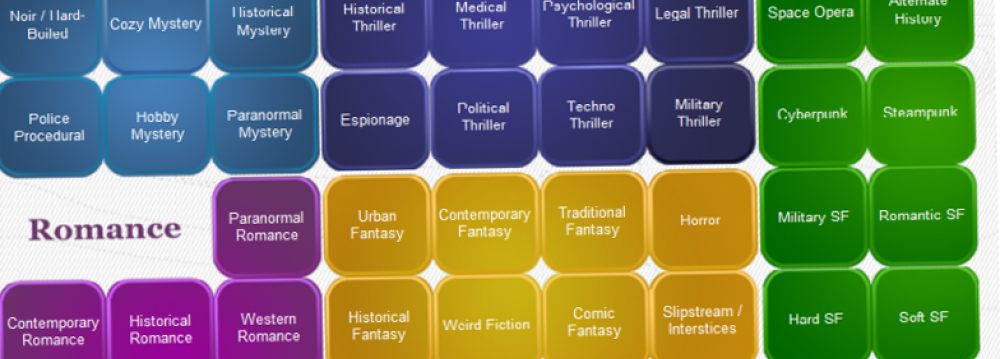After a hiatus of over one year, the Cultural Center of Book City Institute is resuming its fiction writing course, this time focusing on ‘Genre Fiction’.
The novel writing course is to be conducted in the form of a workshop under the tutelage of the prolific writer Mohammad Hassan Shahsavari, 44. The 30-session workshop spread over seven months starts on November 9.
Shahsavari’s writings include the novels ‘Stairs Landing’ (2004), ‘Night of Possible’ (2009), ‘Once Upon a Time a Heart’ (2013), ‘Dear M’ (2013), as well as the novella ‘Shahrbanou’ (2010). He has published hundreds of movie reviews and literary articles. Over 30 novels have resulted from his novel writing workshops.
Shahsavari, in an interview conducted by the Book City Institute to get a better understanding of genre fiction (also known as popular fiction) and its place in Persian literature, said he is a “plot specialist,” and since plots have a principal role in genre fiction, he could assist genre writers and wannabes.
Genre in Plato’s Works
He explained that genre is an inclusive and extensive writing style started by early theoreticians and philosophers including Plato (423-347 BC), who incorporated the ancient Athenian genres of epic, eulogy, comedy, and tragedy in order to articulate his own unique form of philosophical poetry, bookcity.org reported.
“Every genre has its major function. Many scholars attribute a moral function to the genres of tragedy and comedy; the former through appreciation of admirable virtues, and the latter by denouncement of vile deeds.”
To expound the function of genre, Shahsavari mentioned the Georgics, a poem in four books by Latin poet Virgil, likely published in 29 BC. The poem seems to be the first recorded in the genre of educational poetry on the subject of agriculture and husbandry.
Genre determines the character type in fiction. Tragedy renders noble individuals of upper strata; while comedy speaks of lowly people. And when it comes to audience, tragedy attracts literati, unlike comedy, a genre more appreciated by the populace.
Of each genre, a certain sort of plot and ending is expected. “Plots of genre fiction have less flexibility compared to those of literary fiction.”
Picaresque for instance, a genre of usually satiric prose fiction originating in Spain, has a realistic, often humorous plot involving the adventures of a roguish hero of low social status living by his or her wits in a corrupt society.
Different Settings
Each genre demands its own setting. Comedies usually happen in towns and villages. Castles and courts play host to tragedies that tend to fit into few limited places; while the genres of romance and epic, on the other hand, are sprawled over a vast stretch of places. Similarly, time is a limited range for tragedy, but extends long for epic.
“Maybe it’s just better to use ‘category’ instead of genre. It means the very terms you’ve heard so much: romance, horror, thriller, sci-fi and so on, which happened to be in accordance with market demands,” Shahsavari said. “Documents show that genre-based categorization of books for facility of access has been an old habit. They suggest that the shelves of Alexandria Library had been categorized on the basis of genre.”
“According to Genre Theory, all novels are included in genre, even (Iranian writer Sadeq) Hedayat’s ‘The Blind Owl’ that is said to be of the highest literary value in Persian literature. It is in fact written in the genre of psychological thriller.”
Genre as Seen in Market
However, the book market has the dominant grasp of genre which is limited to plot, ambience, as well as associated emotions and thoughts.
The plot in the genre of romance sets someone in love; in a crime genre, someone should be killed; and in horror fictions, a helpless individual is exposed to a mysterious, cruel force.
If these three elements are scarce in a book, the work is not usually placed beside genre fictions. In literary books, character rendering comes prior to plot. Literary books are basically experimental and tend to have complicated characters and a literate language. Famous literary awards go to this group, Shahsavari said.
‘Prince Entejab’ by fiction writer, critic and Editor Houshang Golshiri (1937-2000) as well as ‘The Blind Owl’ by writer and translator Sadeq Hedayat (1903-1951) are placed among literary works. But ‘Lady Ahou’s Husband’ by writer Ali Mohammad Afghani, 90, is considered a common or popular novel, as are ‘Azadeh Khanom and Her Writer’ and ‘The Song of Those Killed’ by novelist, poet and critic Reza Baraheni, 80.
As regards marketability of genre, Shahsavari added that romance sells best all around the world. Romance novels constitute 40% of the published books in the US.
“According to my reckoning, 50% of Iranian novels are romance. They are the most successful genre fictions in the country. Best seller ‘Drunkard Morning’ by novelist Fattaneh Haj Seyed Javadi, 70, is a vivid example of genre fiction.


